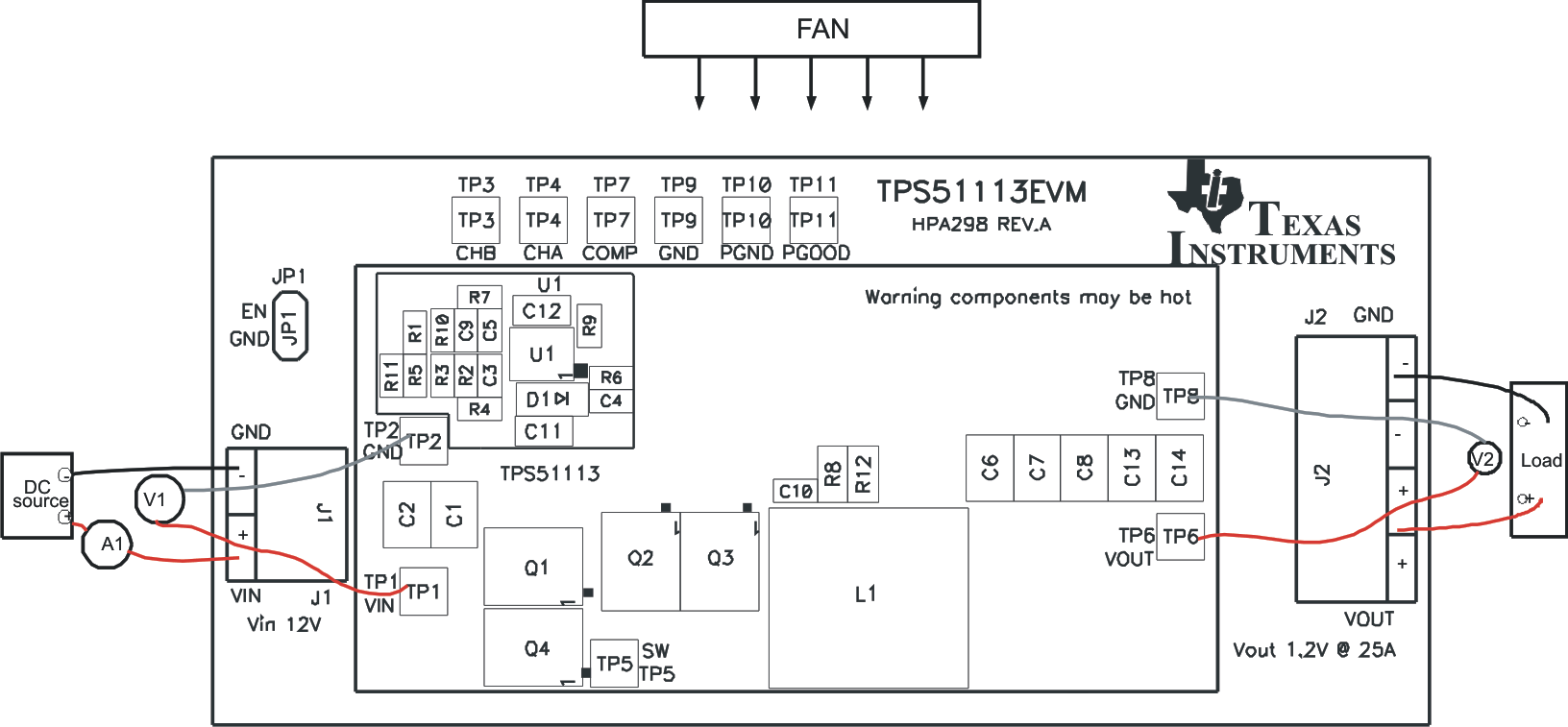SLUU359A April 2009 – February 2022 TPS51113
7.2 Recommended Test Setup
Figure 7-2 is the recommended test set up to evaluate the TPS51113-EVM. Working at an ESD workstation, make sure that any wrist straps, bootstraps, or mats are connected referencing the user to earth ground before power is applied to the EVM.
 Figure 7-2 TPS51113-EVM Recommended
Test Setup
Figure 7-2 TPS51113-EVM Recommended
Test Setup